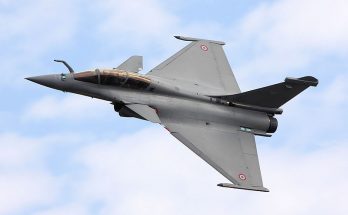
The White House is seeking $24 billion in additional funding to support Ukraine for the first few months of the 2024 fiscal year. That funding is part of a broader $40 billion emergency supplemental request that also includes $12 billion in domestic disaster relief funding and $4 billion to address issues on the southern U.S. border. The emergency supplemental request is not subject to the defense spending caps enacted in the recent debt ceiling agreement.
The Ukraine portion of the supplemental request includes $13.1 billion in security assistance, which would come on top of $62.3 billion in military aid that has been signed into law so far. The security assistance is primarily intended to help replenish equipment donated to Ukraine directly from U.S. stockpiles and for purchasing new equipment directly from manufacturers to send to Ukraine, but it will also cover other operations and personnel costs related to the war. More than $10 billion is allocated for equipment donations and replenishing stockpiles.
Administration officials said the aid request is intended to accompany an anticipated continuing resolution (CR) – a stopgap spending bill that would avoid a government shutdown if Congress fails to pass the FY24 budget on time – indicating the funding is meant to address requirements for the first quarter of FY24. An additional supplemental request could be released later in the year. For comparison, an FY23 CR passed last September included $7.8 billion in security assistance, which was followed by another $27.9 billion in security assistance in a December omnibus appropriations bill.
The latest funding request includes $11.3 billion that would flow through the Pentagon’s operation & maintenance budget. The largest pool of O&M funding falls under the Defense-Wide account and includes $4.5 billion to replace equipment donated to Ukraine directly from U.S. stocks and $5 billion for the Ukraine Security Assistance Initiative, which is used to purchase equipment for Ukraine directly from manufacturers. The remaining O&M funding supports various U.S. activities, such as intelligence analysis, flying hours, maintenance and sustainment, and other support costs.
Another $1.7 billion is included in the Pentagon’s acquisition coffers, comprising the procurement and research, development, test, & evaluation accounts. The largest item is $755 million for the Army’s missile procurement account, which will help increase missile production to accelerate munitions replenishment efforts. The White House also wants $43.8 million to increase ammunition production, $9.1 million for ship depot maintenance for surge ship support, and $4.5 million for mineclearing equipment.
The administration is seeking a pair of classified funding allotments, including $694.4 million within the Air Force’s Other Procurement account. That account includes miscellaneous programs for the Air Force, but it also serves as a pass-through for other defense agencies, so the funding may be for one of those agencies. Another $1.8 million in classified funding is sought through the Navy’s Other Procurement account.
The request also includes $190.1 million in the RDT&E account for cybersecurity and other defense support for the European theater, more than half of which is located within Air Force coffers and could be pass-through funding for another agency. Another $51 million would support deployed personnel.
Outside of the DoD, the White House wants an additional $1 billion in Foreign Military Financing that would support Ukraine and other countries affected by the war. The financing is intended to bolster capabilities like air defense, artillery, armor, anti-armor, and maritime security, among others. The administration says the FMF will incentivize donations from other countries to Ukraine and backfill previous donations. At the same time, the White House is working to transition countries away from Russian equipment. Portions of the FMF request will also support Taiwan.
Shaun's deep-rooted interest in military equipment continues in his role as a senior defense analyst with a focus on the United States. He played an integral role in the development of Forecast International's U.S. Defense Budget Forecast, an interactive online product that tracks Pentagon acquisition programs throughout the congressional budget process. As editor of International Military Markets – North America, Shaun has cultivated a deep understanding of the vast defense markets in the United States and Canada. He is a regular contributor to Forecast International's Defense & Security Monitor blog and has co-authored white papers on global defense spending and various military programs.




